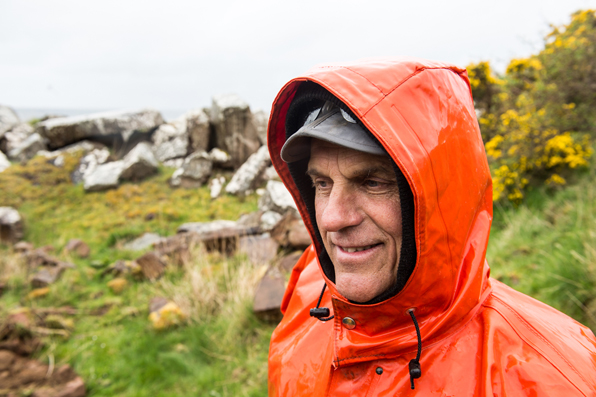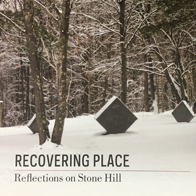
July 4–October 10, 2016
stone wall
Stone wall
Fieldstone
Replica of field walls built on Stone Hill, 1700s
Constructed by Mountain Home Landscape, spring 2016
TRANSCRIPT:
From colonial times well into the twentieth century, pork was favored on American dinner tables over beef or mutton. Cattle were specifically bred as draught or milch animals, and sheep for their wool. Hogs, on the other hand, could be raised solely for their meat as semiwild forest foragers, rooting through the shady understory for chestnuts, beechnuts, and acorns. In the autumn they were rounded up for slaughter, their meat smoked or salt-cured to provide a succulent staple year-round.
As colonial forest land was turned to cultivation, roving swine herds became a nuisance, invading and destroying entire crop fields in a matter of hours. The hogs were herded onto marginal lands like the rocky top of Stone Hill. Attempts to keep them there took the form of stone barricades. An early example of this practice comes from the Dutch on Manhattan Island. They built a long, solid wall to exclude rampaging pigs from the north edge of their colony in an area now known as Wall Street. Stone walls fringed woodlands and ran through them, creating a webwork of stone partitions to separate boars from sows and to apportion grazing rights among different hog farmers.
Walking the old Stone Hill Road today we see a natural environment littered with the remnants of bygone animal husbandry. It’s a common belief that colonial hilltops were cleared of trees and dry stone walls built around newly established pasture land, but this forest didn’t necessarily grow up around the walls. Quite possibly, the walls here were laid up within a primal forest that was retained and managed for the purpose of raising pigs. Two hundred years ago a visitor to Stone Hill might more likely have met a white-footed pig on the trail than a white-tailed deer. A popular breed at the time was black-skinned with patches of white on the hocks and snout. Its name came from the county in England where the breed was developed four hundred years ago; imagining a herd of Berkshire hogs on Stone Hill creates a new sense of an old place.

Dan Snow is an art maker in the outdoors. Dry-laid stone construction is the mode of making he employs to devise site-specific works of environmental art. A master craftsman with the Dry Stone Walling Association of Great Britain, Snow lectures, leads workshops, and writes about the art and craft of working with dry stone in the landscape.
Recovering Place: Reflecting on Stone Hill
By Mark C. Taylor
An illustrated book chronicling the land art and sculptures created by Mark C. Taylor at his home in the Berkshire hills, echoing themes found in the exhibition. Supported in part by Herbert A. Allen, Jr. and the Clark Art Institute and published by Columbia University Press. Call the Museum Store at 413 458 0520 to order.

